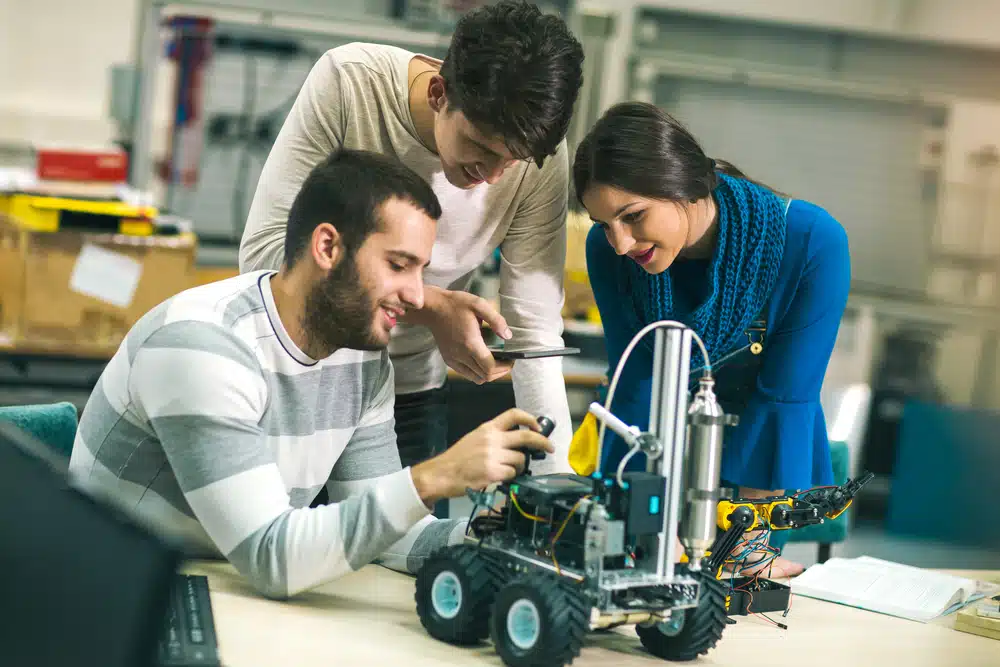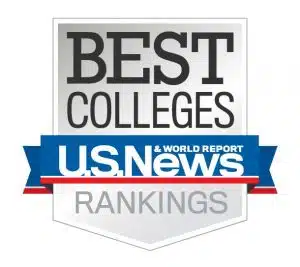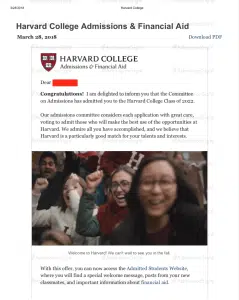The Trinity College International Robot Contest
Experience the ultimate clash of innovation and technology as the Trinity College International Robot Contest brings together the brightest minds from around the world to compete in a futuristic battle of machines.
This is a prestigious competition in the world of robotics. The competition features different categories, such as firefighting robots, line-following robots, and wall-climbing robots, and is governed by strict rules and regulations to ensure fair and safe competition.
The contest has played a significant role in promoting innovation and technology in robotics and continues to inspire the next generation of robotics enthusiasts.
It has a rich history that dates back to 1995. It was founded by Dr. David Levy, a well-known computer scientist and chess champion, and Dr. Noel Sharkey, an expert in artificial intelligence and robotics.
The competition was initially called the “Robot Football” competition and was focused on robots playing football against each other.
Over time, the competition evolved and expanded to include different categories, such as firefighting robots, line-following robots, and wall-climbing robots. The name was changed to the “Trinity College International Robot Contest” to reflect the broader scope of the competition.
Since its inception, the contest has attracted participants from all over the world, including students, researchers, and enthusiasts. The competition has grown in popularity over the years, with more and more participants and visitors attending each year.
One of the defining moments in the history of the contest occurred in 2007 when the competition introduced the “Robot Marathon” category.
This category involved robots navigating a challenging course that was over 26 miles long. The introduction of the “Robot Marathon” category was a significant milestone in the history of the competition and highlighted the increasing importance of robotics in various industries.
In addition to showcasing the latest technological advancements in robotics, the contest has also provided a platform for participants to share their knowledge and expertise with others.
The competition has helped to foster collaboration and innovation in the field of robotics and has played a crucial role in promoting technology and education worldwide.
The contest is one of the most important events in the robotics industry, with a long history of fostering innovation and collaboration among researchers, students, and enthusiasts.
The competition has played a significant role in shaping the field of robotics and has contributed to the growth and development of the industry in numerous ways.
One of the most significant impacts of the contest is the way it inspires and motivates people to explore robotics and related fields.
The competition attracts participants from all over the world, including students, researchers, and hobbyists, who come together to showcase their skills, exchange knowledge, and learn from one another.
This not only helps to raise awareness about the potential of robotics but also encourages young people to pursue careers in this field.
The contest also serves as a platform for researchers and developers to showcase the latest technological advancements in robotics. The competition has seen the development of robots that can navigate challenging terrains, climb walls, and even fight fires.
This not only highlights the potential of robotics in various industries but also helps spur further innovation and development in the field.
The contest also helps to promote the importance of robotics education. The competition provides a platform for students to apply their knowledge and skills to real-world challenges and helps to highlight the importance of STEM education.
This not only helps to inspire the next generation of robotics enthusiasts but also helps to address the shortage of skilled workers in this field.
Overview: Trinity College International Robot Contest?
What is the Trinity College International Robot Contest? This is one of the most prestigious robotics competitions in the world, held annually at Trinity College Dublin, Ireland.
The contest also features categories that challenge participants to build robots that can perform tasks such as sorting objects, playing soccer, and even running a marathon.
The competition is governed by strict rules and regulations to ensure a fair and safe environment, and participants must demonstrate technical skill, creativity, and teamwork to succeed.
One of the key features of the contest is the way it fosters collaboration and knowledge-sharing among participants.
Participants are encouraged to work together and share ideas and expertise, which helps to break down barriers and promote innovation.
This has led to the development of numerous open-source robotic platforms and software tools that are freely available to the public and have contributed to the growth of the industry.
Different Categories of the Competition
The contest features several categories that challenge participants to build robots that can navigate complex environments, solve challenging problems, and perform useful tasks. In this blog, we will explore the different categories of competition in the contest.
1. Firefighting Robots
The firefighting robot category challenges participants to build robots that can locate and extinguish a fire in a simulated environment. The robots must navigate through a maze-like course and use sensors to detect the fire, which they then extinguish using a water-based solution.
The goal of this category is to promote the development of robots that can assist in real-world firefighting situations, reducing the risk of injury to human firefighters.
2. Line-Following Robots
The line-following robot category challenges participants to build robots that can follow a line on the ground and navigate through a series of obstacles. The robots must be fast, accurate, and able to make split-second decisions as they navigate through the course.
This category is important because it helps to develop robots that can be used for tasks such as warehouse automation, self-driving cars, and even delivery drones.
3. Wall-Climbing Robots
The wall-climbing robot category challenges participants to build robots that can climb vertical surfaces. The robots must be able to navigate a wall while carrying a payload and must be able to navigate corners, crevices, and other challenging features.
This category is important in the Trinity College International Robot Contest because it promotes the development of robots that can be used for inspection and maintenance in hard-to-reach areas, such as on the sides of buildings or inside pipelines.
4. Soccer Robots
The soccer robot category challenges participants to build robots that can play soccer. The robots must be able to navigate a playing field, locate the ball, and score goals while avoiding other robots.
This category is important because it promotes the development of robots that can work collaboratively in complex environments and perform tasks that require high levels of coordination.
5. Marathon Robots
The marathon robot category challenges participants to build robots that can run a marathon. The robots must be able to navigate a course that is over 42 kilometers in length and must be able to do so while carrying a payload.
This category is important because it promotes the development of robots that can operate for extended periods and that can be used for tasks such as search and rescue operations or environmental monitoring.
6. Freestyle Robots
The freestyle robot category is an open-ended category that challenges participants to build robots that can perform a task of their choosing.
This category allows participants to showcase their creativity and technical skills and often results in some of the most innovative and impressive robot designs in the competition.
By participating in the different categories, participants can hone their technical skills, showcase their creativity, and contribute to the advancement of the robotics industry.
Rules and Regulations of the Contest
The Trinity College International Robot Contest is one of the most prestigious robotics competitions in the world, bringing together some of the brightest minds in the field to showcase their innovative creations and compete for the top prize.
However, to ensure a level playing field for all participants and maintain the integrity of the competition, the contest has a set of strict rules and regulations that all teams must adhere to.
1. Eligibility criteria
This is an annual robotics competition that attracts teams from all around the world. While the competition is highly regarded, not all teams are eligible to participate. There are certain eligibility criteria that teams must meet in order to compete in the contest.
Team Composition: To be eligible to participate in the contest, teams must consist of at least one student who is currently enrolled in an educational institution.
This means that students from high school, undergraduate, and graduate programs are all eligible to participate. In addition to students, teams may also include faculty members as mentors or advisors, but they cannot participate as active members of the team.
Team Size: The contest allows teams of up to five members. However, it is important to note that at least one member of the team must be an undergraduate or graduate student.
This requirement ensures that the competition is focused on students who are pursuing degrees in engineering or other related fields.
Nationality: The contest is open to teams from all around the world. There are no restrictions on the nationality of the team members or the country they represent. This is in line with the competition’s mission to bring together the best minds from different parts of the world and encourage collaboration and innovation.
Registration: In order to participate in the contest, teams must register for the competition. Registration typically opens several months before the competition and requires teams to provide basic information about their team, including the names of the team members and the educational institutions they are affiliated with. Registration fees may also apply.
2. Robot specifications
The Trinity College International Robot Contest allows robots of various types and designs, but they must meet certain specifications to be eligible for the competition. The robot must fit within a specified size limit of 50 cm x 50 cm x 80 cm and weigh no more than 25 kg.
Additionally, the robot must operate autonomously and be powered by a battery or other portable power source. The use of explosives, pyrotechnics, or other hazardous materials is strictly prohibited.
3. Competition format
The contest consists of several rounds of competition, with each round testing the robot’s ability to perform a specific task. The tasks vary each year and may include obstacle courses, object recognition, or other challenges that test the robot’s mobility, intelligence, and ability to perform a task.
Each team is given a certain amount of time to complete the task, and the team with the fastest completion time and the highest score is declared the winner.
What judging criteria are used in the Trinity College International Robot Contest?
The judging criteria play a critical role in determining the competition’s winner.
In this blog, we will explain the judging criteria in detail and how they are used to determine the contest winner.
1. Task completion
One of the key judging criteria is the robot’s ability to complete tasks within a specified time limit. Each round of the competition typically consists of several tasks, and the robot must complete each task within the specified time limit to receive points.
2. Accuracy
Judges will evaluate the robot’s accuracy in completing each task, including its ability to detect and manipulate objects.
3. Innovation
The judges will evaluate the robot’s design, creativity, and potential for real-world applications. This criterion is particularly important because it encourages teams to think outside the box and develop innovative solutions to real-world problems.
4. Performance
The judges will evaluate the robot’s performance across all tasks, including its speed, accuracy, and ability to complete more challenging tasks.
5. Collaboration
Finally, judges will evaluate the team’s ability to collaborate and work effectively together. This includes communication, teamwork, and problem-solving skills.
By understanding these criteria, teams can develop strategies to maximize their score and increase their chances of winning the competition. Ultimately, the contest provides a platform for the best and brightest minds in robotics to showcase their skills and innovation to a global audience.
How has the Trinity College International Robot Contest impacted the robotics industry and its growth worldwide?
How has the Trinity College International Robot Contest impacted the robotics industry and its growth worldwide? The contest is one of the most prestigious competitions in robotics, and it has played a vital role in promoting innovation and technology in the field.
This contest has brought together some of the brightest minds in robotics from all over the world to showcase their skills, push boundaries, and drive innovation in the industry. Here, we will explore how the contest has promoted innovation and technology in robotics.
1. Pushing the limits
The contest has been pushing the limits of robotics technology since its inception. The contest challenges teams to develop robots that can perform complex tasks autonomously and in unpredictable environments.
These challenges have led to significant advances in robotics technology, such as the development of machine learning algorithms and advanced computer vision systems.
2. Encouraging collaboration
The contest has been instrumental in encouraging collaboration among robotics researchers and industry professionals.
Teams from different countries and regions come together to share their knowledge and experience, which has led to new collaborations and partnerships.
These collaborations have led to the development of new technologies, products, and innovations that would not have been possible otherwise.
3. Creating a platform for innovation
The contest provides a platform for researchers and industry professionals to showcase their innovations and technologies. It is a platform for demonstrating the capabilities of advanced robotics technology and the potential it has to revolutionize various industries.
The contest provides an opportunity for teams to receive feedback from experts in the field, which can be used to improve their technologies and innovations.
4. Inspiring the next generation
The contest has also inspired the next generation of robotics researchers and industry professionals. The contest provides an opportunity for young people to see the potential of robotics technology and the exciting careers that are available in the field.
Many students who have participated in the contest have gone on to pursue careers in robotics research, development, and engineering.
5. Driving progress in robotics
The contest has been a driving force in the progress of robotics technology. The contest has encouraged researchers and industry professionals to push the limits of what is possible in robotics and has fostered collaboration and innovation in the field.
As a result, there have been significant advances in robotics technology, including the development of autonomous robots, advanced sensing systems, and machine learning algorithms.
In conclusion, the Trinity College International Robot Contest is a premier competition that has been driving innovation and growth in the robotics industry worldwide. Additionally, the contest has increased interest in robotics and led to increased investment in the field.
Participating in the contest can give students an edge in their college applications. The competition showcases a student’s skills, knowledge, and passion for robotics, which can be attractive to college admissions officers.
In addition, participating in the contest demonstrates a student’s ability to work in a team, think critically, and problem-solve, all valuable skills for college and beyond.
For students who are interested in participating in this contest or pursuing a career in robotics, it is crucial to have a strong college application.
Here at AdmissionSight, we offer personalized college admissions consulting services to help students achieve their academic and career goals.
With our guidance, students can craft compelling essays, discover new extracurricular activities, and create a strong college application that showcases their unique strengths and accomplishments.
If you are a student who wants to learn how we can help you achieve your academic and career aspirations, book your initial consultation today!




































